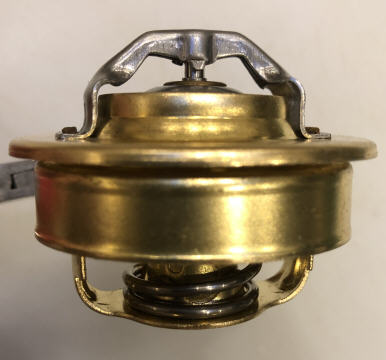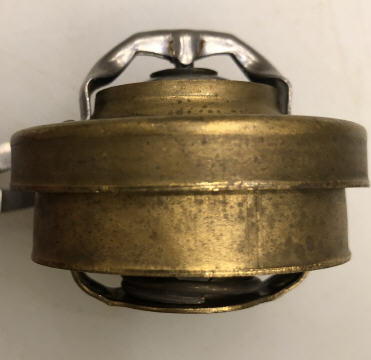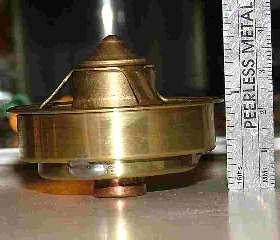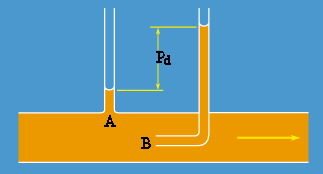You’re way ahead of my writeup, but I’ll give you some previews. It’s not that I’m saying you’re wrong, but you’ll have to defend.
Around 1962 or 1963, Jaguar finally abandoned the bellows thermostat and went with a reverse poppet wax thermostat from Western Thompson, C20766 (74C). This thermostat had a stepped cap that allowed the sleeve to tuck into the thermostat cover. The sleeve telescoped into the cap, so that it had plenty of clearance for the slot, even given that it had a “long” sleeve. You’ve probably never seen one of these, so here it what they looked like, closed and open:
This thermostat should substitute for any sleeved bellows thermostat. Since it’s a reverse poppet wax thermostat, it’s possible to use better water pumps and high pressure caps. The only problem is that Western seems to have dropped production fifty years ago. You’ll never get closer to one than these photos, unless someone comes along and starts making them again ;-).
C3731/a as currently offered by several vendors is an attempt at replicating the functionality of this thermostat. It’s actually cut down from a Land Rover series IIa thermostat, which for some reason is abundantly available. The LR thermostat is very similar to C20766, except that the cap isn’t “necked” so it won’t fit into a Jag housing without modification. C3731/1 cuts 3/8" out of both cap and sleeve. Although the remaining sleeve is narrow, it should still be wide enough to block any slotted bypass. Again, it doesn’t matter that it moves backwards. If you have actual measurements that indicate that it’s mismatched to the port on pre-150 cars, I’d like to see your work, and I’ll include that in my writeup. Here are photos of C3731/1 open and closed, as well as the donor landy stat:
It’s not a perfect solution, but it’s not awful. There ARE two issues with C3731:
A) The landrover has a narrower flow path than C20766.
B) Since these skirts are made by a drawn cup method, they taper slightly. The part that’s cut off is 48.5mm, the part that remains is 47mm. So it’s far from a perfect seal, but the design is weak in theory, and can never really seal anyway.
You’ll not that these photos look nothing like the photo of 3731/1 on Bob’s page. This part had been undergoing development for many years, and there are a few different versions. The Robertshaw adaptation he speaks of hasn’t been available for many years, the current version is based on the Land Rover stat. The version sold today is probably the zenith of this concept, any improvement will require a completely new design.
For early cars, the Moss Motors bellows thermostat is probably a better bet, and certainly less controversial.
Here’s another tidbit: it’s really not all that important whether or not the bypass seals. I’ve spent six months visiting shops and measuring any manifolds I could find. Not one of the manifolds I’ve examined had a sleeve thermostat. Not a bellows thermostat, not C20766, not C3731. They’ve all been using single poppet thermostats, probably for decades. This works just like any other open bypass system: Newton rules, and the coolant flows straight through the thermostat rather than making a hard right turn into the bypass. The 4.2 manifold is especially well suited to single poppet thermostats, due to it’s very straight flow paths. Earlier manifolds placed the thermostat at right angles of flow to reduce lifting.
Finally, there’s no “minimal flow thru the closed thermostat to the radiator flow path to aid in a more rapid opening”. If the thermostat is in good shape, it seals tightly when closed. Bypass flow bootstraps opening.











 The thermostat for the xk120 does not install in the intake manifold…it is in the inlet of the radiator.
The thermostat for the xk120 does not install in the intake manifold…it is in the inlet of the radiator.







